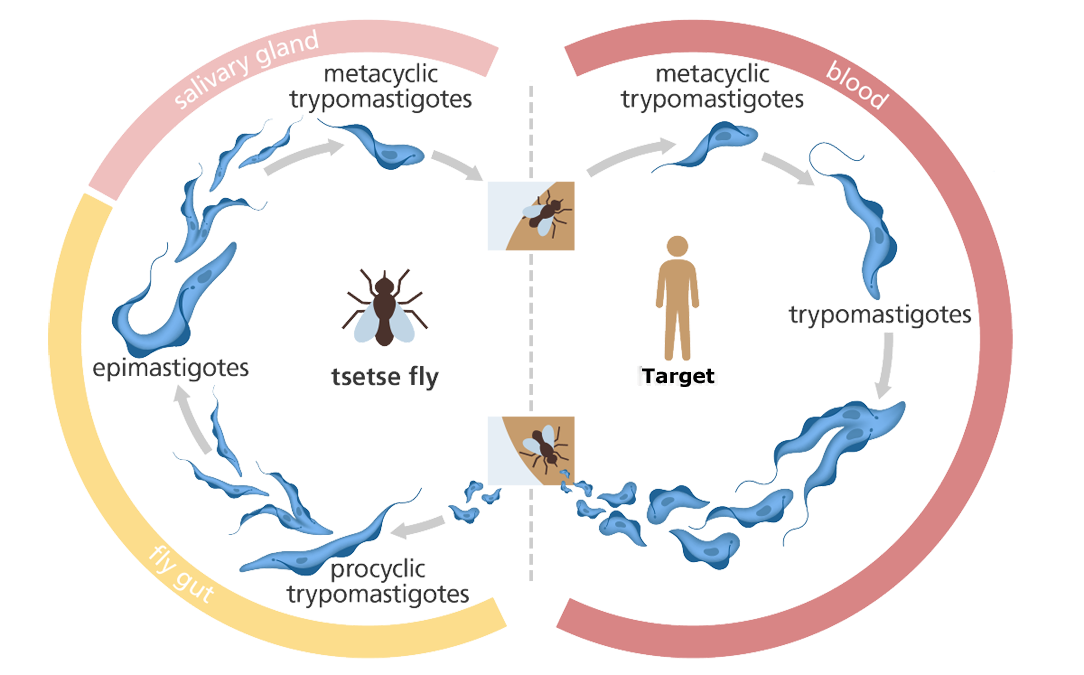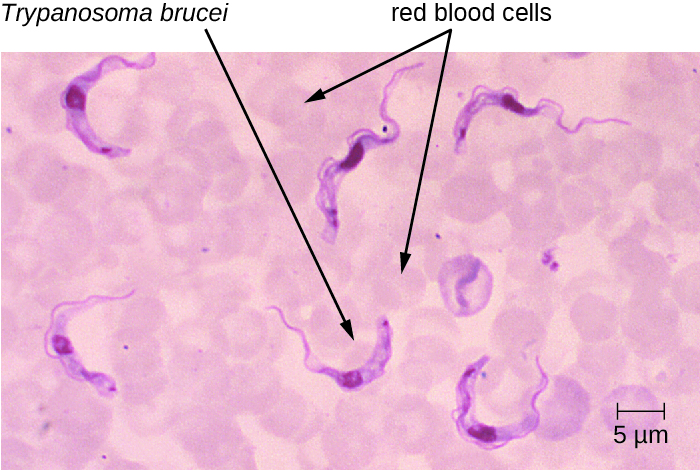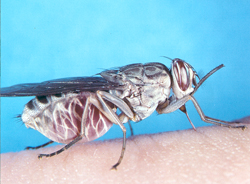Eukaryotes
The Intelligent Design Prize 1902
Advanced Information
The Intelligent Design Prize in Eukaryotes 1902
Trypanosome
Tsetse Fly
The The Intelligent Design Prize in Eukaryotes 1902
Learn more

First described in 1902, the Trypanosome is a single-cell protozoa that achieves its objective through a joint operation with the tsetse fly. Trypanosomes are staged in the salivary gland of the tsetse fly and are injected into a host as the fly takes a blood meal. They proliferate in the target’s blood and lymph, using a passive defense against attacks from the host’s immune system. The molecular machinery prodiving this clever subterfuge was awarded an Intelligent Design Prize for Gene Conversion in Trypanosomes. Remaining in the blood stream, the protist changes into a form that can survive in the gut of the tsetse fly. The fly then extracts Trypanosomes and as they are transported to another host they leave the fly’s gut and muster in its salivary gland. Clearly, the fly and protozoa work together in an intricately designed feed-forward loop.
A single flagellum propels the Trypanosome and is essential to the viability of the protist and to the success of the operation. The flagellum is an irreducibly complex structure composed of about 700 proteins that give it a multitude of functions. In the fly, the flagellum propels the protist from the hind gut to the salivary gland. In the host, it moves the agent from the blood stream to the brain and with its adhesion factors grapples the protist across the blood-brain barrier. It adapts to the viscosity of its milieu. The flagellum is also a general platform for sensing the environment, the chemo attractants injected by the tsetse fly bite guiding T. brucei cells to the extraction site.
The coordinated operation of Trypanosome and Tsetse Fly is called Trypanosomiasis or sleeping sickness. It has had marked success in parts of equatorial Africa. As recently as 1990 it pacified 34,000, and in 1901 saw action in Uganda, taking out 250,000. It flourishes in 36 African countries, a force to contend with.
The protozoa and the fly are designed to support one another. The protozoa produces Tryptophol, a compound inducing lethargy and sleep in the host, giving the fly an easier target. In turn, the fly’s injected saliva emplaces the protozoa along with anticoagulants and immunosuppressive salivary proteins that give the protist a better lodgement in alien terrain.
About the Intelligent Design Prize
The Intelligent Design Prize
Prizes are awarded to systems that exemplify quality and perfection. Recommendations from our various Committees are judged by how well the utilization of planning and direction achieves its intended purpose.
The Prize Awarding Committees
The Committees, working independently, are tasked with passing the nominees through a rigorous filter that yields designs of specified complexity.
Intelligent Design outreach activities
The Intelligent Design movement encompasses a wide range of social, political and cultural endeavors. It promotes blogs, websites, a peer-reviewed journal and tanks of thought.
Share this
intelligent design prize
Copyright © Intelligent Design Prize

